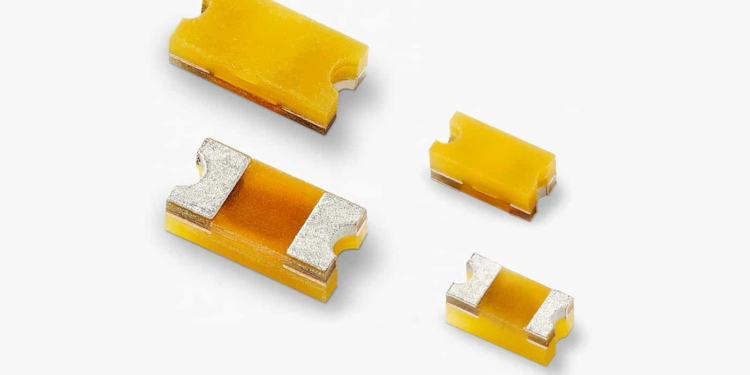source: Littelfuse news
CHICAGO, July 31, 2017 — Littelfuse, Inc., the global leader in circuit protection, today introduced a series of compact, surface-mount, polymer automotive-grade electrostatic discharge suppressors capable of protecting sensitive devices from contact/air discharges as high as 30kV.
The AXGD Series XTREME-GUARD™ ESD Suppressors are specifically designed for high-frequency, high-speed applications with high voltage ratings (up to 32VDC) and extreme ESD protection requirements. Even after multiple ESD strikes, they continue to maintain extremely low leakage (<1nA); their ultra-low capacitance ensures compatibility with high-speed data line applications. These surface-mount devices, available in 0603 or 0402 footprints, have a rigid and flat top cover to simplify pick-and-place assembly and allow for more compact circuit board designs.
The AEC-Q200 qualified design of the AXGD Series XTREME-GUARD ESD Suppressor makes it ideal for automotive applications, including infotainment, automotive antennas, and RF antenna systems, as well as mid- to high-end electronics.
“The AXGD Series offers circuit designers a level of ESD suppression capability that’s competitive with or superior to popular TVS Diodes and other ESD suppressors, however these devices offer much lower capacitance and leakage current and higher voltage ratings,” said Jin Xu, senior product manager at Littelfuse. “As AEC-Q200 qualified devices, circuit designers will find them especially appealing for automotive applications.”
AXGD Series XTREME-GUARD ESD Suppressors offer these key benefits:
High ESD withstand rating (30kV) offers greater ESD protection and higher design flexibility for enclosures, buttons and touchscreens.
High voltage rating (24VDC for XGD10402 devices, 32VDC for XGD10603 devices) provides a wider voltage range for a broader variety of electronic devices.
Ultra-low capacitance (just 0.04pF for XGD10402 devices, 0.09pF for XGD10603 devices) makes them ideal for high-frequency and high-speed data, video, antenna, and I/O circuits.
Availability
AXGD Series XTREME-GUARD ESD Suppressors are available in a choice of two package sizes, in both tape and reel format: XGD10402 devices are provided in 0402 packages and sold in quantities of 10,000; XGD10603 devices are provided in 0603 packages and available in quantities of 1,000 and 5,000. Sample requests may be placed through authorized Littelfuse distributors worldwide.
































